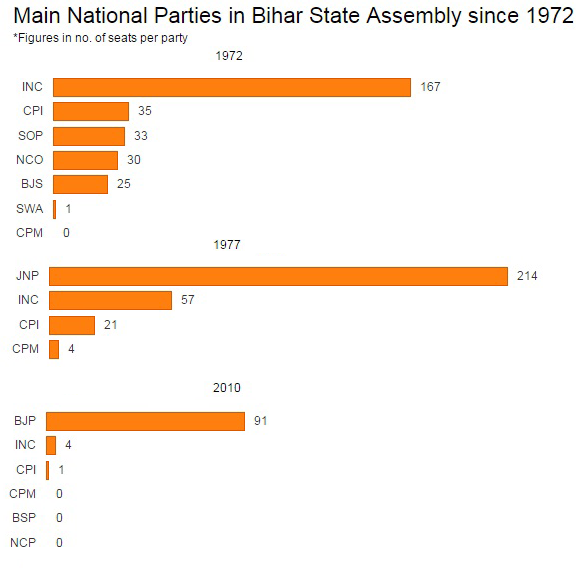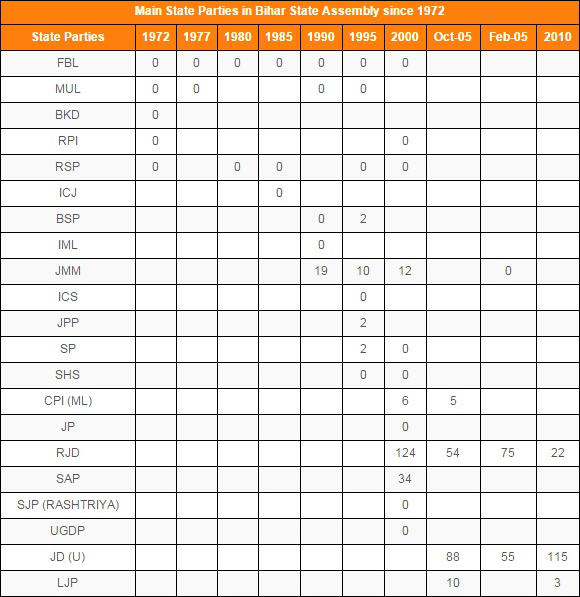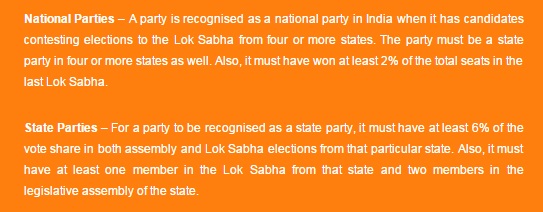The 38-year-old JP Movement, or what is also known as the Bihar Movement, is in the limelight again, as the political battle for India’s second-most populous state approaches its denouement.
Jayaprakash Narayan, or JP, was a revolutionary socialist leader, who in 1977 led a movement against the Congress party, eventually realigning India’s political map.
For the first time since Independence, the Congress – thanks to the JP movement – lost power after the 1977 general elections that followed the emergency.
The Janata Party, an amalgam of anti-Congress groups, took charge of Delhi but could hold power only for two years.
State assembly elections after 1977 display similar trends.
In Bihar, the Janata Party won 214 out of a total of 324 seats in 1977.
By early 1980s, the Janata Party began to crumble in Bihar too. There were many factions that emerged. Two major parties in Bihar today are the Rashtriya Janata Dal and the Janata Dal (United), both formed from factions that separated from the Janata alliance and emerged as important state parties in Bihar in the 1990s.
Known for their caste vote-banks and implacable opposition to one another until this year, they are now allies with the Congress in the ongoing state elections.
This is ironic because the Janata Party had emerged as the opposition to the “hegemonic” rule of the Congress in the 1970s.

Source: Election Commission of India
Acronyms: INC (Indian National Congress); BJS (Bharatiya Jana Sangh), CPI (Communist Party of India), CPM (Communist Party (Marxist)), NCO (National Congress Organization), SOP (Samyukta Socialist Party), SWA (Swatantra Party), JNP (Janata Party), BJP (Bharatiya Janata Party), BSP (Bahujan Samaj Party), NCP (Nationalist Congress Party).
The story of 2015 elections: new alliances
The 2015 Bihar vidhan sabha (state legislative assembly) elections are witnessing a grand political alignment, a mahagathbandhan (grand alliance) of the JD(U), RJD and Congress.
They are pitted against the National Democratic Alliance (NDA), including the Bharatiya Janata Party, Lok Janashakti Party, Rashtriya Lok Samata Party and Hindustan Awam Morcha (Secular).
Other groups include the Samajwadi Secular Front including Samajwadi Party, Nationalist Congress Party and Jan Adhikar Party; and the left alliance, including the Communist Party of India, CPI(M), CPI(ML), Socialist Unity Centre of India (Communist), All India Forward Bloc and Revolutionary Socialist Party.
Bihar is the third-largest state in India, home to 104 million people, sending 40 representatives to the Lok Sabha, fourth after Uttar Pradesh (80), Maharashtra (48) and West Bengal (42), making it an important proving ground for national politics.

Note:Blanks in the table show years when these parties did not contest elections or were not present. 0 shows no seats won. Acronyms: FBL (All India Forward Bloc), MUL (Indian Union Muslim League), BKD (Bharatiya Kranti Dal), RPI (Republican Party of India), RSP (Revolutionary Socialist Party), ICJ (Indian Congress Jagjivan), BSP (Bahujan Samaj Party), IML (Indian Union Muslim League), JMM (Jharkhand Mukti Morcha), ICS (Indian Congress Socialist), JPP (Jharkhand People’s Party), SP (Samajwadi Party), SHS (Shiv Sena), CPI (ML) (Communist Party (Marxist-Leninist)), JP (Janata Party), RJD (Rashtriya Janata Dal), SAP (Samata Party), SJP (Rashtriya) (Samajwadi Janata Party (Rashtriya), UGDP (United Goans Democratic Party), JD(U) (Janata Dal United), LJP (Lok Jan Shakti Party).
Offshoots of the 38-year-old legacy of JP movement hangs over Bihar polls. keep forming new factions and new alliances. Based on their performance in national and state elections, their status keeps swinging between national or state parties.
Another important factor was the creation of Jharkhand from Bihar in 2000, making JD(U) and RJD seats more intensely concentrated in Bihar.

This article was originally published on IndiaSpend.com, a data-driven and public-interest journalism non-profit.










